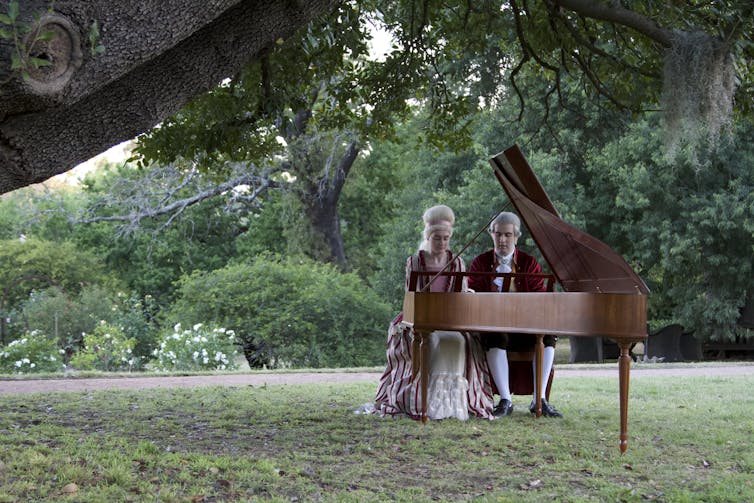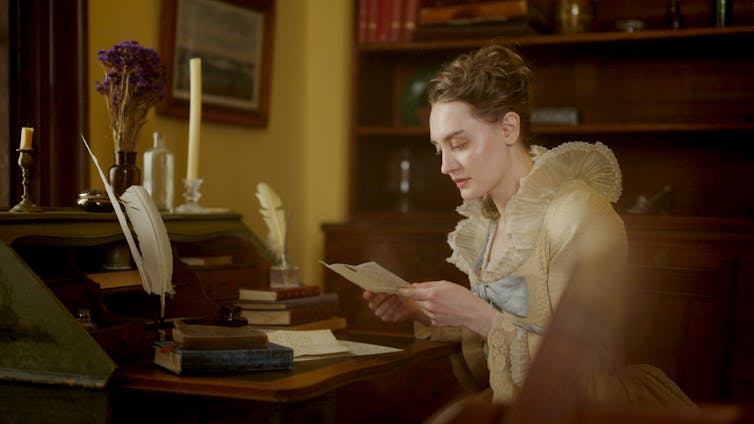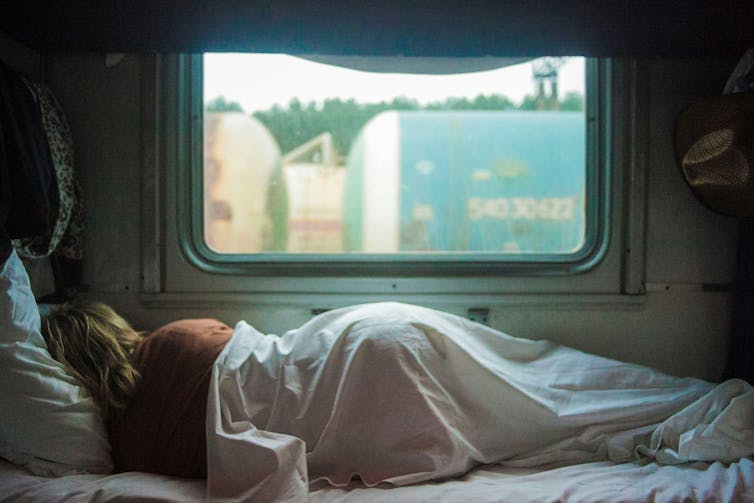 |
| Paul Mescal (left) as Lucius and Pedro Pascal as Marcus Acacius in Gladiator II. FlixPix/Alamy |
By Daniel O'Brien, University of Essex
“I will not be your instrument in this life or the next,” utters Paul Mescal’s Lucius halfway through Ridley Scott’s sequel to his 2000 blockbuster, Gladiator. These words are far from an isolated nod to iconic moments in that original film, but one of a litany of rehashed moments which are often done bigger ~ but not necessarily better.
As expected, there is bloody action from the outset, as well as killer baboons, rhino-riding warriors and even a shark-infested Colosseum. But this comes at a cost, as Gladiator II sacrifices subtlety and plausibility.
It’s hard to escape the feeling this film is just chasing the box office, in the hope of another instalment. Where the original used a progressive incline of believable gladiatorial set pieces that ramp up the danger, the sequel punches through outlandish combat sequences before a finale that, in contrast, seems to fizzle out.
The action makes for a fluid 148-minute runtime, but perhaps plausibility is no longer an important factor of the modern blockbuster. I believe this played an important role in establishing the original Gladiator as an epic classic, so I’m not convinced this sequel will have the same lasting impact.
From an audience perspective, it may be difficult to move past Russell Crowe’s absence from the role he embodied in blood, sweat and fury: he was Gladiator. But Mescal is a wonderful actor, and his subtle brilliance in Aftersun (2022) and All of Us Strangers (2023) assured me that this film would be in good hands.
Similarly, Pedro Pascal’s compelling television work, particularly The Last of Us (2023-2025), The Mandalorian (2019-2023) and Game of Thrones (2011-2019), filled me with confidence. Both actors do a perfectly fine job, but the extent of their acting range feels restricted.
Their craft is perhaps too submerged by the spectacle, and hindered by a respect for Crowe – which means Mescal shies away from “out-Maxing” Maximus, whose presence haunts Gladiator II through gestures, props and costume. Mescal recreates the dialogue, posture and leadership, but doesn’t quite own the role in the way Crowe did.
There are reprisals of roles from Connie Nielson as Lucilla and Derek Jacobi as Gracchus, while Denzel Washington’s Macrinus is something of a distorted echo of Oliver Reed’s Proximo.
Elsewhere, the sadistic sibling emperors Geta and Caracalla, played by Joseph Quinn and Fred Hechinger (who apparently modelled their look and mannerisms on Johnny Rotten and Sid Vicious), jointly replace the complexity of what Joaquin Phoenix achieved single-handed in his portrayal of Commodus. The joint casting, like the action, seemingly relies on “bigger is better” performances, while the original employed a less-is-more approach.
Again, it was Phoenix’s plausibility as a performer, and the more carefully staged dramatic arc within the original film, that allowed viewers to see his transition from pitiful to spiteful, highlighting the actor’s range. This is lost in the sequel, with its forced narrative of sibling rivalry that appears to come out of nowhere in order to hurry the film along.
The third act of the film seems to accelerate into a frantic rush towards a crossroads – at which point a symbolic neutral thumb may point upwards to a lucrative franchise, or downwards to a quick death, based on the chants of the viewers.
Either way, it raises the question of intention: why bring back a richly enjoyable story like this without advancing it in some way? Huge sums of money and the technical challenge of outdoing the original in special effects are doubtless the driving factors, but what about the audience?
Gladiator II is so limited by its homage to the original that it even taps the lexicon of Spartacus (1960), in what is another heavy-handed moment. An animated tapestry of vignettes from the original film opens this sequel, and later we see a close-up of Lucius’s hands, intercut with the iconography of Maximus gently brushing his fingers against waving stalks of wheat.
Although it’s not a shot-for-shot remake, it’s certainly a scenario-for-scenario duplicate (similar to George Lucas’s 2015 Star Wars: The Force Awakens and 1977’s Star Wars: A New Hope) that goes in with big spectacular set pieces while neglecting a compelling plot to develop the gladiator story.
Gladiator II is undoubtedly worth watching, if not remembering. Pascal’s four-minute arena battle as Oberyn Martell in Game of Thrones is perhaps more likely to stick in the cultural memory than some of the fighting in Gladiator II. Not because the fighting or cinematography in Game of Thrones is necessarily superior, but because characterisation and vengeance are revealed during that battle, peppering the action with story, drive and intention ~all of which feel a little absent in Gladiator II.
To me, this would have been better served as a ten-part series ~ one which keeps the scale of the action, but also offers a space for the drama and characterisation too. It might yet happen.
Maybe the blockbuster is no longer the space for character development, but that’s not to say I was not entertained. After all, was that not the point of ancient gladiators? But go and see it for yourself – at the very least, it will make you want to watch Russell Crowe in the original again.![]()
Daniel O'Brien, Lecturer, Department of Literature Film and Theatre Studies, University of Essex














